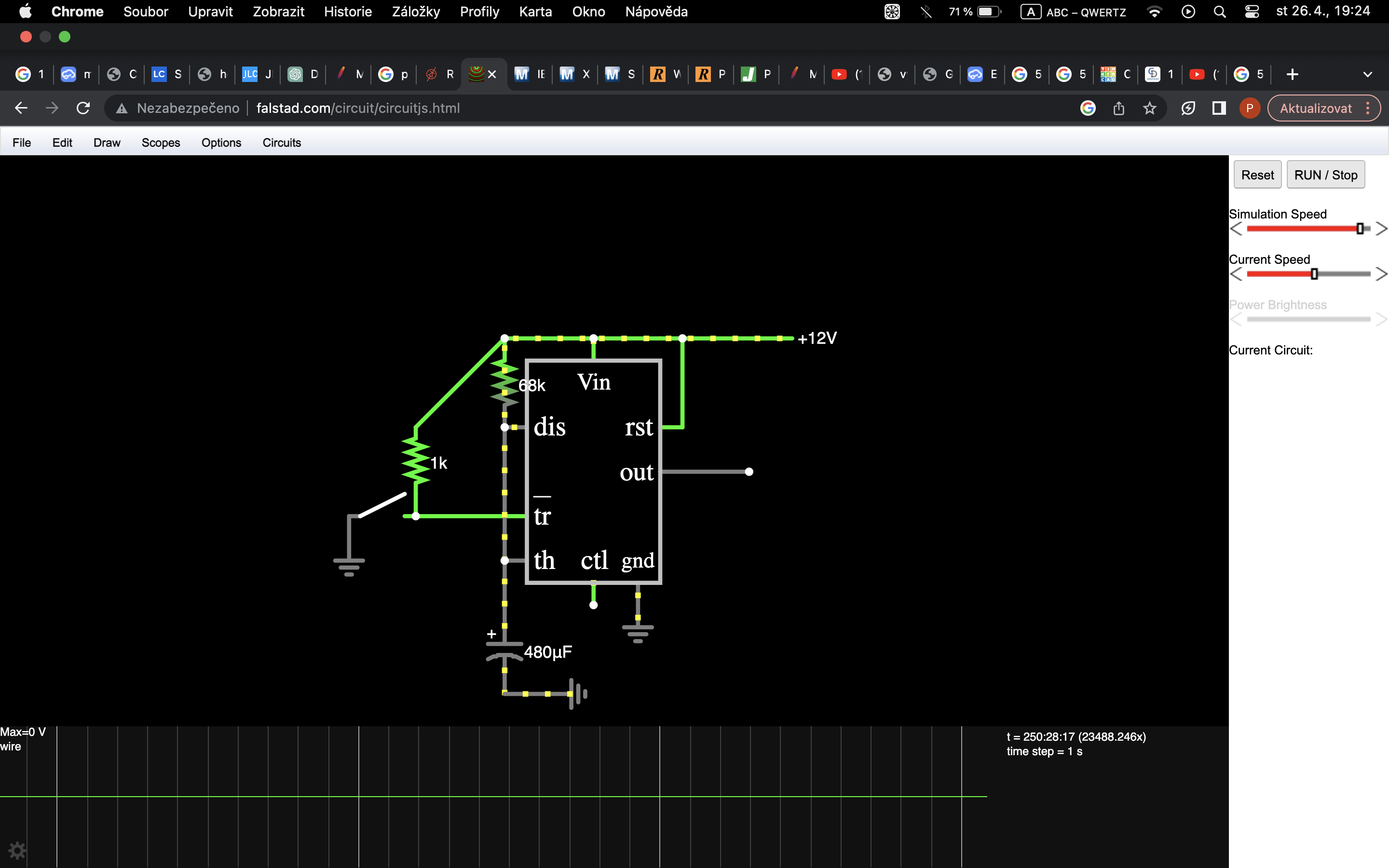I have a problem in Falstad that when making a 555 IC based signal delayer that should delay a power-off of a certain device, that the whole circuit behaves really weird and doesn't work as stated by multiple people who tried it out on the internet. Why doesn't it work in the sim?
There is no delay, it turns on as soon as the switch is toggled. When applying putting there a diode it seems to behave very strangely.
here is a link to captured screen video of the behavior I am facing: https://youtu.be/XtibAHLGqTE
Here is a link to the schematic I was coming out of (but there are many like it): https://elonics.org/adjustable-auto-on-off-delay-timer-circuit-using-555/


